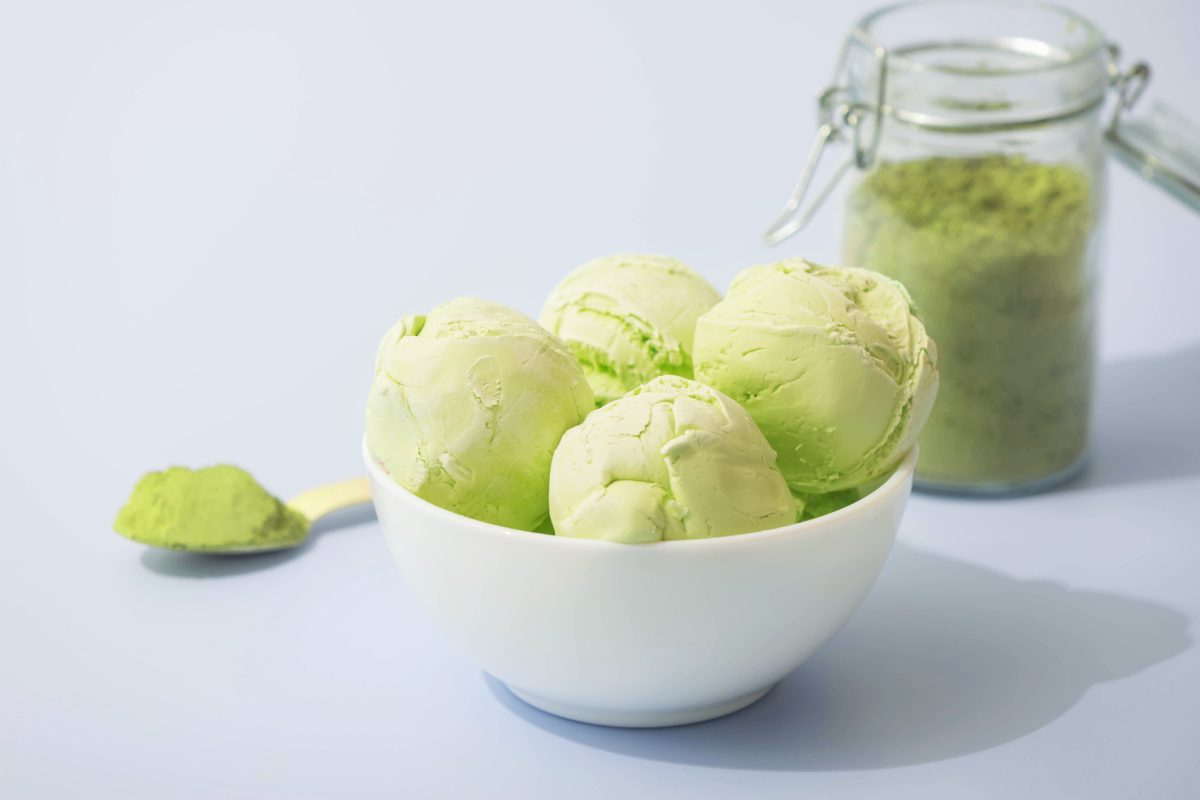Introduction to Matcha and Its Potential in the Ice Cream Market
Matcha, a finely ground green tea powder from Japan, is derived from shade-grown leaves, resulting in a vibrant color, distinctive umami flavor, and exceptional nutritional profile.
When crafted into ice cream, matcha delivers a sophisticated sensory experience: a creamy texture, a balanced interplay of sweetness and subtle bitterness, and a visually striking appearance that captivates consumers.
Packed with antioxidants, such as catechins, and linked to benefits like enhanced focus and stress reduction, matcha aligns with the growing demand for functional, premium products.
For ice cream businesses and investors, matcha ice cream presents a compelling opportunity to capitalize on a global trend, setting their offerings apart in a competitive landscape.
The Rise of Matcha in the Global Market
The global ice cream industry is projected to reach US$ 136.5 billion by 2029, with an annual growth rate of approximately 5%, driven by innovations in flavors and formats, according to industry reports.
Within this dynamic market, matcha has emerged as a leading flavor, gaining prominence in regions such as Asia, Europe, North America, and Oceania, where it is a mainstay in artisanal parlors and global chains alike.
Matcha’s popularity reflects a consumer shift toward exotic flavors and visually appealing, shareable experiences.
Gen Z and Millennials, who represent a significant portion of ice cream consumers, prioritize products that combine aesthetics, unique taste profiles, and health benefits.
The vibrant green hue of matcha is a natural fit for social media, driving organic engagement and attracting customers to retail locations.
Its versatility enables creative combinations with ingredients like white chocolate, citrus, vanilla, or fusion desserts such as matcha ice cream with mochi, appealing to diverse palates.
Industry insights indicate that 46% of ice cream business owners plan to invest in new niches, with premium flavors like matcha at the forefront.
Businesses incorporating matcha report up to a 20% increase in sales of high-margin products, as customers are willing to pay more for a distinctive experience.
This trend is bolstered by a 15% global rise in demand for artisanal and natural products, positioning matcha as a strategic choice for differentiation in a crowded market.
Profitability and Economic Viability Analysis
Matcha ice cream offers attractive profit margins, balancing low production costs with high perceived value.
The cost of matcha powder ranges from US$ 30 to US$ 80 per kilogram, depending on quality (culinary or ceremonial), but its use is highly efficient: approximately 5 to 10 grams per liter of ice cream, resulting in a per-serving cost of US$ 0.30 to US$ 0.60.
Combined with other ingredients like milk, sugar, and stabilizers, the total cost per liter ranges from US$ 3.00 to US$ 5.00.
In contrast, a single scoop of matcha ice cream can retail for US$ 3.00 to US$ 6.00, yielding profit margins of 100% to 300%.
A setup producing 500 servings weekly can be established for US$ 15,000 to US$ 30,000, covering equipment (freezers, industrial mixers), initial inventory, and store modifications.
At an average price of US$ 4.00 per serving and 300 servings sold weekly, weekly revenue could reach US$ 1,200, with an estimated net profit of US$ 700 after operating costs.
Return on investment may be achieved within 6 to 12 months, depending on location and marketing efforts.
Compared to traditional flavors like chocolate or vanilla, matcha commands a premium price due to its perception as a sophisticated, health-conscious choice.
Its versatility also supports higher-value products, such as matcha milkshakes (US$ 6.00 to US$ 8.00), soft-serve options, or layered desserts, further boosting profitability.
Strategies for Implementation and Differentiation
To maximize the potential of matcha ice cream, businesses should adopt a structured approach:
- Premium Ingredient Sourcing:
Select high-quality matcha, preferably of Japanese origin, to ensure authentic flavor and vivid color. Partner with reliable suppliers for consistent supply. - Staff Training:
Equip employees to highlight matcha’s benefits, such as its antioxidant properties, and recommend pairings to drive upselling. Consultative service enhances perceived value. - Digital and Visual Marketing:
Invest in professional photography and social media campaigns to showcase the ice cream’s aesthetic appeal.
Collaborations with local influencers can expand reach, while seasonal promotions, such as matcha specials, maintain interest. - Menu Innovation:
Develop variations like matcha with chocolate drizzle, ice cream sandwiches, or vegan options using plant-based milk to attract diverse audiences, including those with dietary restrictions. - Sustainability and Experience:
Use eco-friendly packaging and promote sustainable practices to align with consumer values. Offer experiences like matcha tastings or workshops to build customer loyalty.
Risks and Mitigation Strategies
While promising, matcha ice cream carries risks. Seasonal fluctuations in ice cream demand can be addressed by offering matcha-based hot beverages, such as lattes, during colder months.
In markets less familiar with matcha, consumer education through free samples or promotional campaigns can drive adoption. To counter competition from larger chains, businesses should focus on quality, personalized service, and continuous innovation.
Conclusion
Matcha ice cream is a strategic opportunity for ice cream businesses seeking innovation, profitability, and market relevance in a growing industry.
With high profit margins, strong visual appeal, and alignment with global consumer trends, matcha enables businesses to position themselves as leaders in sophistication and quality.
For entrepreneurs and investors, incorporating matcha is not just about following a trend—it’s a calculated move to capture discerning consumers and drive sustainable growth.
Embrace matcha ice cream and transform your business into a must-visit destination for flavor enthusiasts.
